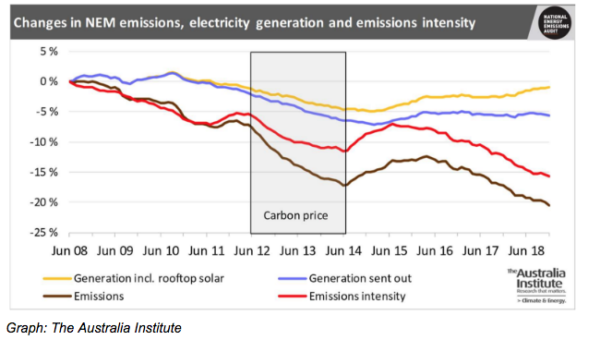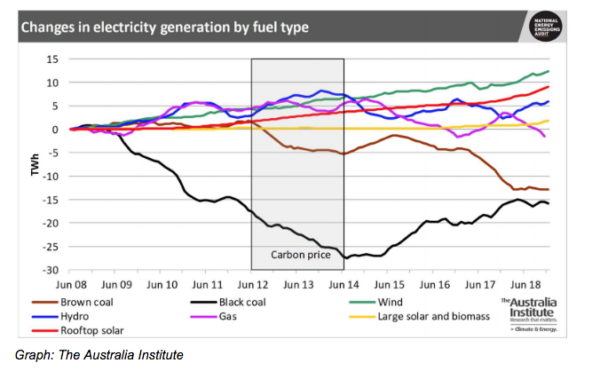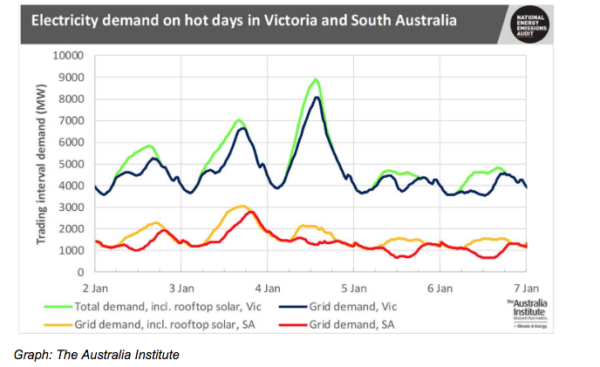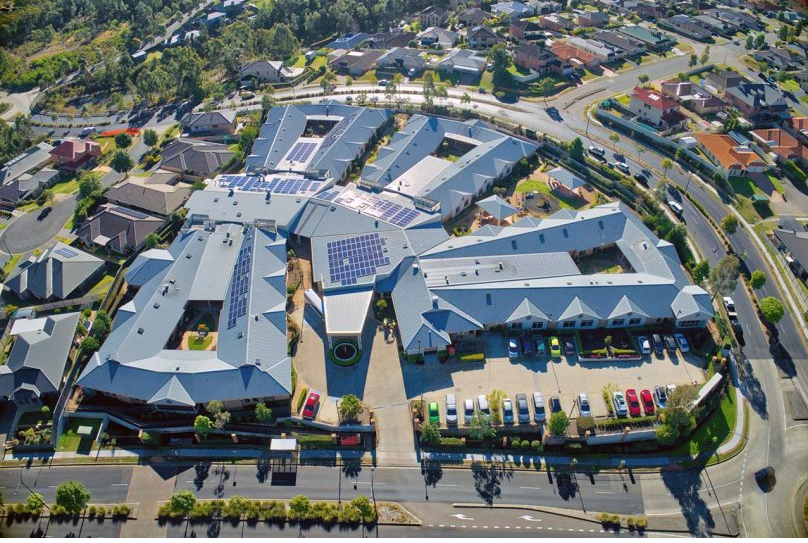The decline in emissions intensity illustrated by The Australia Institute’s (TAI) January report, “seems likely to accelerate”, writes report author Hugh Saddler, who says the past 18 months have seen renewable supply mainly supplanting gas generation. “From now on,” Saddler says, “it seems to be displacing the more emissions-intensive black coal generation,” which will bring about accordingly higher emissions reductions.

The report credits about a quarter of the total emissions reduction to efficiency measures having reduced the electricity used by buildings and to more energy-efficient equipment. Three-quarters is attributable to the continuing increase of renewable energy in the grid.

One roadblock to this steady increase is the current slowdown in connection to the grid of new utility-scale wind and solar farms, which Saddler conflates with “widespread comments over recent months about delays in connecting new renewable generators”. The restriction in connections has been imposed by the Australian Electricity Market Operator (AEMO) to reduce load on network transmission lines that are not up to the task.
AEMO identifies North Queensland, south-west New South Wales and north-west Victoria as the zones with the most seriously inadequate capacity. Says Saddler, “AEMO has identified lack of transmission capacity in these regions as at present perhaps the biggest obstacle to the continuing transition of the NEM towards a low-emissions future.”
Nicky Ison, Director of Community Power Agency, sees this as an opportunity for governments to support mid-scale, distributed renewable generation. Support of the mid-scale would encourage community groups to participate in various models of community solar, thereby also helping to remedy the inequities inherent in current subsidies for rooftop solar, which favour home owners. Ison says community-owned solar projects could thrive in the 1 MW to 5 MW solar sector if funded to the same level as rooftop and utility-scale projects.
Rooftop solar has proved to be the summer hero of the energy sector, as TIA shows it meeting the demand of extremely hot days experienced in January, from behind the meter.

The reliability of gas and coal generators is patchy in general, not just at this demanding time of year, according to TIA monitoring.
But to illustrate, only yesterday AGL’s Loy Yang A power station in the Latrobe Valley lost generation from a 560 MW unit due to a tube leak, with repairs expected to be complete within three days. A 370 MW unit at Yallourn coal-fired power station in Victoria is also down due to planned maintenance. The NSW Tallawarra gas-fired facility is without 435 MW unit.
In all, the NEM is down more than 1000 MW of generation, such that AEMO has flagged the possibility of mandatory power cuts in Victoria and NSW during forecast high temperatures in the next few days.
Last year’s more than 40% increase in Australia’s rooftop solar generation capacity, as reported by Green Energy Trading, has been a factor in reducing demand on the grid. TIA’s Jan 2019 report shows that peak demand in Victoria on the scorcher of January 4 was pushing 9,000 MW, and that rooftop solar took up more than 9% of that load. A similar reduction was recorded in Victoria.
Given that the most likely causes of short outages on hot days are in fact meltdowns and failures in local networks, as explained by Grattan Institute energy experts Guy Dundas and Lucy Percival, in The Conversation on Jan 16, such behind-the-meter generation can do much to reduce strain, and maintain power to individual households.
In their feature ‘35 degree days make blackouts more likely, but new power stations won’t help’ Dundas and Percival explained that, “Hot weather puts more stress on all parts of the power system. Wires sag and short, fuses blow, transformers overheat, and fires and storms damage power lines.”
Installation of rooftop solar is forecast to continue to grow into a failure-mitigating, grid-supportive role, while reducing consumers’ electricity bills. In the small-scale (up to 15 kW) residential sector a possible flattening in NSW and Queensland markets in 2019 will be boosted by Victoria’s Solar Homes program, which aims to put solar panels on 700,000 Victorian residences.
The business case for rooftop solar is also growing the commercial tier (15 kW to 100 kW) of rooftop solar. And Green Energy Trading forecasts that mid-scale (100 kW to 5 MW) power arrays, largely rooftop systems, but with some ground-mounted systems, will be the segment to watch in 2019, having grown 132% in 2018.
This content is protected by copyright and may not be reused. If you want to cooperate with us and would like to reuse some of our content, please contact: editors@pv-magazine.com.









By submitting this form you agree to pv magazine using your data for the purposes of publishing your comment.
Your personal data will only be disclosed or otherwise transmitted to third parties for the purposes of spam filtering or if this is necessary for technical maintenance of the website. Any other transfer to third parties will not take place unless this is justified on the basis of applicable data protection regulations or if pv magazine is legally obliged to do so.
You may revoke this consent at any time with effect for the future, in which case your personal data will be deleted immediately. Otherwise, your data will be deleted if pv magazine has processed your request or the purpose of data storage is fulfilled.
Further information on data privacy can be found in our Data Protection Policy.